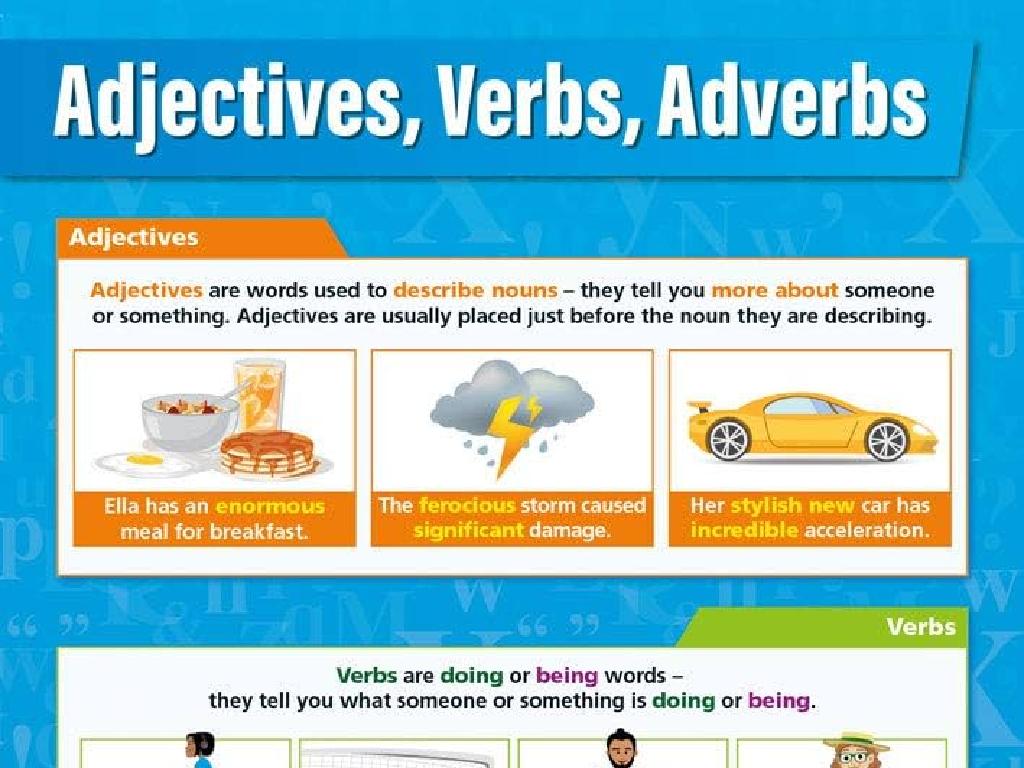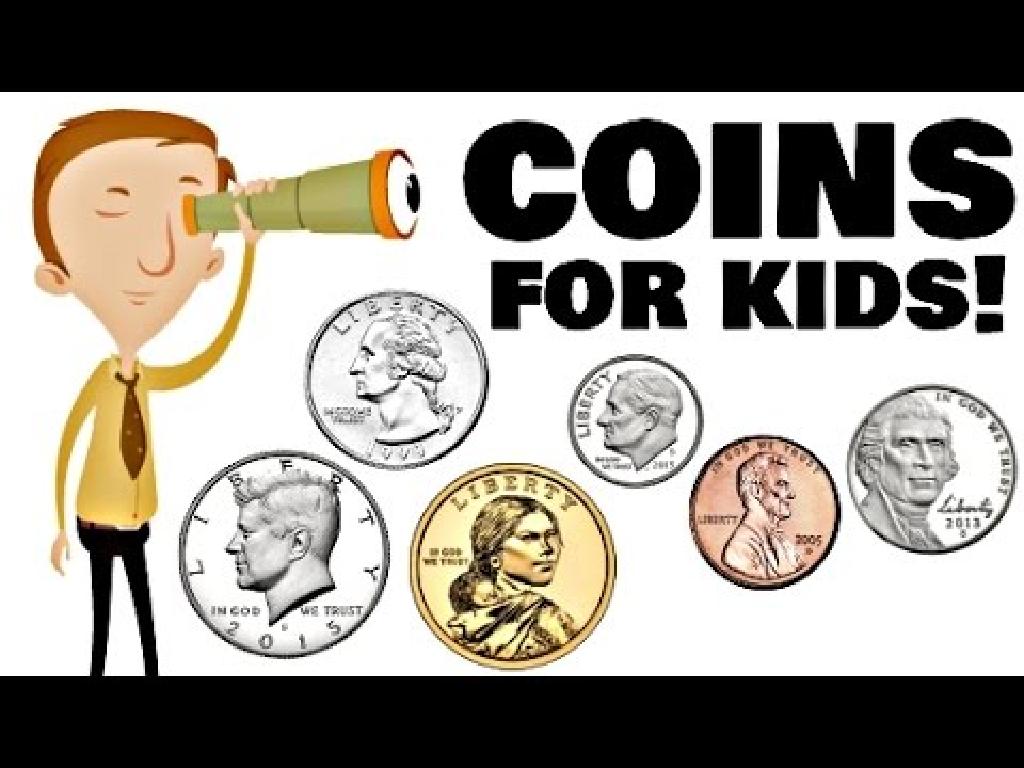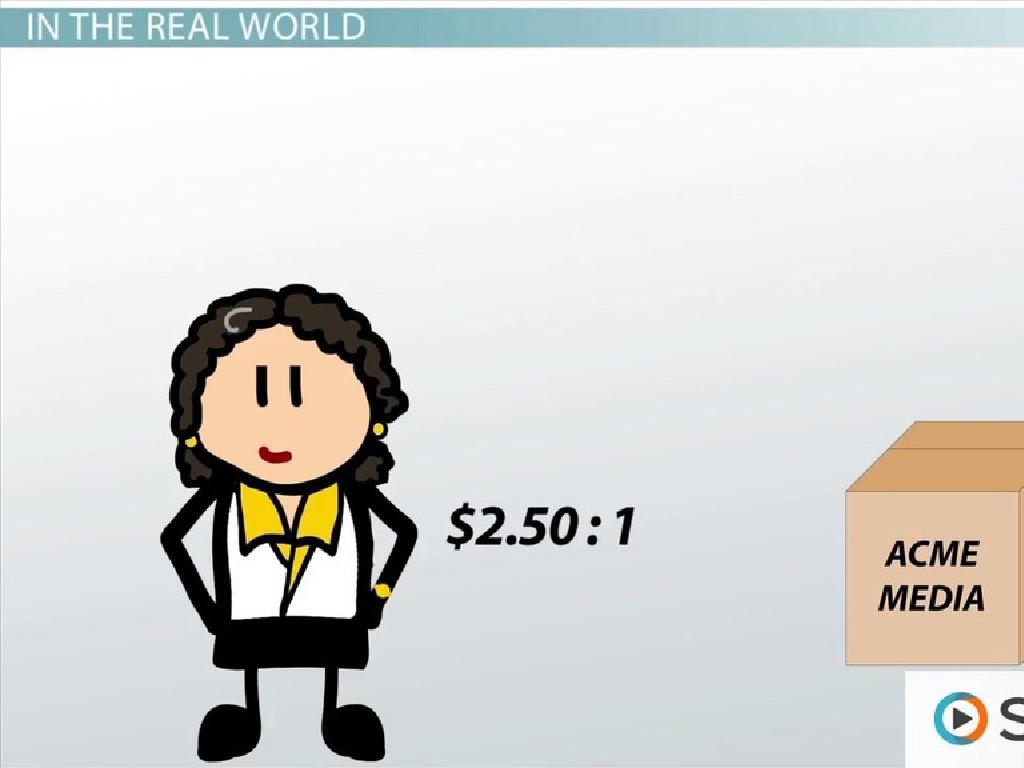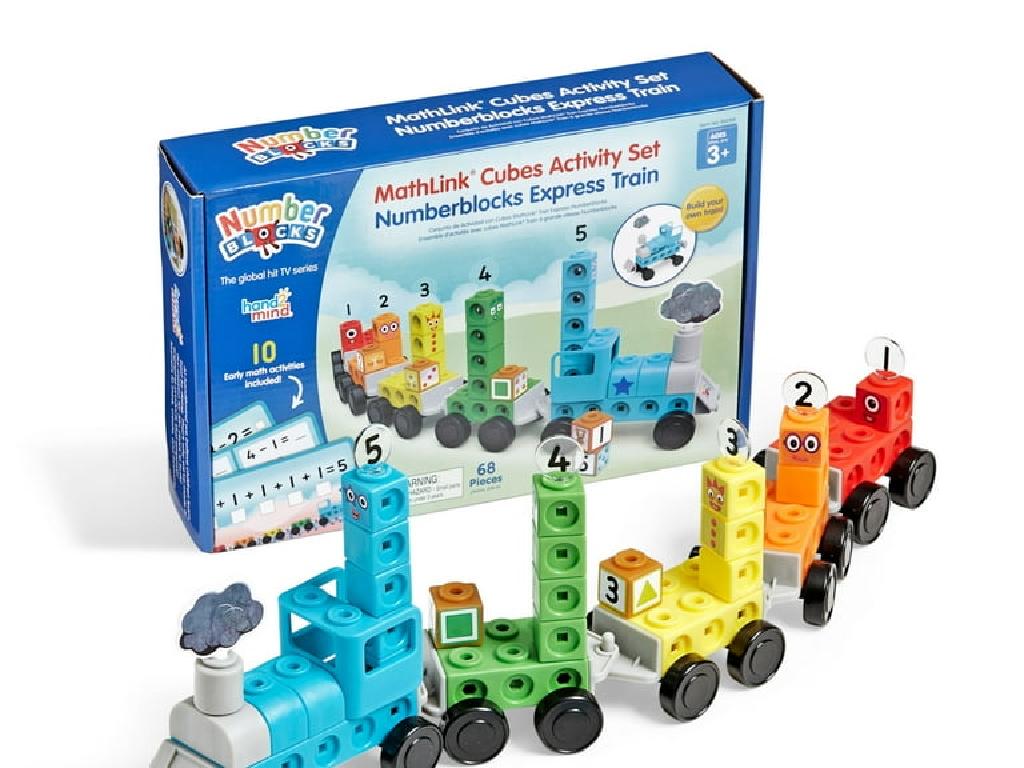Convert Between Decimals And Fractions Or Mixed Numbers
Subject: Math
Grade: Seventh grade
Topic: Rational Numbers
Please LOG IN to download the presentation. Access is available to registered users only.
View More Content
Introduction to Rational Numbers
– Understanding Rational Numbers
– Definition of a Rational Number
– A number expressible as a fraction a/b, where a and b are integers, and b is not zero.
– Examples of Rational Numbers
– Examples: 1/2, 3/4, 0.75, 2 (as 2/1)
– Non-examples to Clarify
– Non-examples: Pi (À), square root of 2
|
This slide introduces the concept of rational numbers, which is foundational for understanding how to convert between decimals and fractions. Emphasize that rational numbers include all integers, fractions, and terminating or repeating decimals, as they can all be expressed as a ratio of two integers. Provide clear examples of rational numbers, including both fractions and their decimal equivalents. Also, present non-examples like irrational numbers, which cannot be expressed as a simple fraction, to help students differentiate between the two. Encourage students to think of numbers they encounter daily and classify them as rational or not.
Decimals and Fractions: Understanding the Relationship
– Decimals: A part of a whole
– Fractions: Ratio of two integers
– Relationship: Different representations
– Both represent parts of whole numbers
– Conversion: Methods and examples
– E.g., 0.75 = 3/4; use division to convert fractions to decimals
|
This slide introduces the concepts of decimals and fractions, aiming to help students understand that both are ways to represent parts of whole numbers. Decimals are shown as numbers with a decimal point, while fractions are expressed as a ratio of two integers. Emphasize the relationship between the two by showing how they can represent the same value in different forms. Teach students the methods to convert decimals to fractions by dividing the decimal number by 1 and then multiplying numerator and denominator to remove the decimal point. Conversely, converting fractions to decimals involves dividing the numerator by the denominator. Provide several examples to illustrate these conversions, ensuring students grasp the concept.
Converting Decimals to Fractions
– Place decimal over 1
– Example: 0.75 becomes 0.75/1
– Multiply by 10 per decimal place
– For 0.75, multiply by 100 to get 75/100
– Simplify the resulting fraction
– 75/100 simplifies to 3/4
|
This slide is aimed at teaching students the process of converting decimals to fractions. Start by writing the decimal number over 1 to create a fraction. Then, for each digit after the decimal point, multiply both the numerator and the denominator by 10. This step is crucial as it removes the decimal point from the numerator. After obtaining the new fraction, the last step is to simplify it by finding the greatest common divisor (GCD) for the numerator and the denominator and dividing both by that number. For example, 0.75 becomes 75/100 after multiplying by 100, and since both 75 and 100 are divisible by 25, the fraction simplifies to 3/4. Encourage students to practice with different decimals to become comfortable with the process.
Converting Fractions to Decimals
– Divide numerator by denominator
– For example, 3/4 means 3 ÷ 4.
– Employ long division as needed
– If the division doesn t end, use long division to solve.
– Round to specified decimal places
– If the question asks for two decimal places, round 0.333… to 0.33.
|
This slide aims to teach students the process of converting fractions to decimals. Start by explaining that the top number (numerator) is divided by the bottom number (denominator). If the numbers do not divide evenly, introduce the concept of long division to find a more precise decimal. Emphasize the importance of rounding, especially in practical applications where an exact decimal is not necessary or when the question specifies a certain number of decimal places. Provide several examples with different levels of complexity and encourage students to practice with fractions that result in both terminating and repeating decimals.
Understanding Mixed Numbers
– Define a mixed number
– A number made up of a whole number and a fraction, e.g., 2 3/4
– Parts of a mixed number
– Whole number: 2, Fraction: 3/4 in 2 3/4
– Real-life examples
– Used in cooking, e.g., 1 1/2 cups of sugar
– Converting to decimals
– Divide the fraction part and add to the whole number
|
Introduce the concept of mixed numbers, which combine whole numbers with fractions, to represent quantities larger than one but not whole. Clarify the components: the whole number and the fraction part. Use relatable examples like cooking measurements to illustrate mixed numbers in everyday life. Teach students how to convert mixed numbers to decimals by dividing the numerator by the denominator of the fraction part and adding the result to the whole number. This skill is crucial for comparing and using mixed numbers in various mathematical operations.
Converting Mixed Numbers to Decimals
– Convert fraction to decimal
– Divide numerator by denominator
– Add decimal to whole number
– Combine with the whole number
– Example: 3 1/2 to decimal
– 1/2 is 0.5, so 3 1/2 becomes 3.5
|
When converting mixed numbers to decimals, start by dividing the numerator of the fraction by the denominator to get a decimal. Next, simply add this decimal to the whole number part of the mixed number. For example, to convert 3 1/2 to a decimal, first convert 1/2 to 0.5 by dividing 1 by 2. Then add 0.5 to the whole number 3 to get 3.5. This process combines the fractional part with the whole number, resulting in a decimal that represents the same value as the mixed number. Encourage students to practice this method with different mixed numbers to become comfortable with the conversion process.
Converting Decimals and Fractions: Practice
– Convert 0.75 to a fraction
– 0.75 equals 75/100 or simplified to 3/4
– Convert 4/5 to a decimal
– 4/5 is 0.8 as each fifth is 0.2
– Convert 2 3/8 to a decimal
– 2 3/8 equals 2 + 0.375, which is 2.375
|
This slide provides practice problems for students to apply their knowledge of converting between decimals, fractions, and mixed numbers. For the first problem, guide students to understand that 0.75 means 75 hundredths, which can be written as 75/100 and simplified to 3/4. In the second problem, students should divide the numerator by the denominator to convert 4/5 to a decimal. For the third problem, instruct students to convert the fractional part of the mixed number 3/8 to a decimal and then add it to the whole number 2. Encourage students to show their work step by step and to simplify fractions where possible. These exercises will help solidify their understanding of the relationship between decimals and fractions.
Class Activity: Converting Decimals to Fractions
– Pair up for decimal conversion
– Work with a partner to convert decimals from a provided list into fractions.
– Use manipulatives for visualization
– Utilize fraction tiles or circles to see the fractions.
– Present your fractions to class
– Share your converted fractions with the class in a short presentation.
|
This activity is designed to reinforce the concept of converting decimals to fractions through collaborative learning and hands-on experience. Provide students with a list of decimals that they will convert to fractions with their partners. Encourage them to use manipulatives like fraction tiles or circles to better visualize the fractions they are working with. After the activity, each pair will present their findings to the class, explaining the process they used to convert the decimals. This will help students learn from each other and gain confidence in their understanding. Possible variations of the activity could include converting fractions to decimals, using different sets of decimals for each pair, or challenging students with mixed numbers.
Converting Decimals and Fractions: A Recap
– Review of conversion methods
– How to change decimals to fractions and mixed numbers, and back.
– Relevance of conversions in life
– Useful for money, measurements, and cooking.
– Homework: 10 conversion problems
– Practice with 5 decimals to fractions, and 5 fractions to decimals.
|
As we conclude, remind students of the step-by-step process for converting between decimals and fractions or mixed numbers. Emphasize the importance of mastering this skill, as it is widely used in various aspects of daily life, such as financial literacy, cooking, and understanding measurements. For homework, assign 10 problems that require students to convert decimals to fractions and vice versa, ensuring they get ample practice. This will help solidify their understanding and prepare them for more complex mathematical concepts. Encourage students to approach these conversions methodically and to check their work for accuracy.






